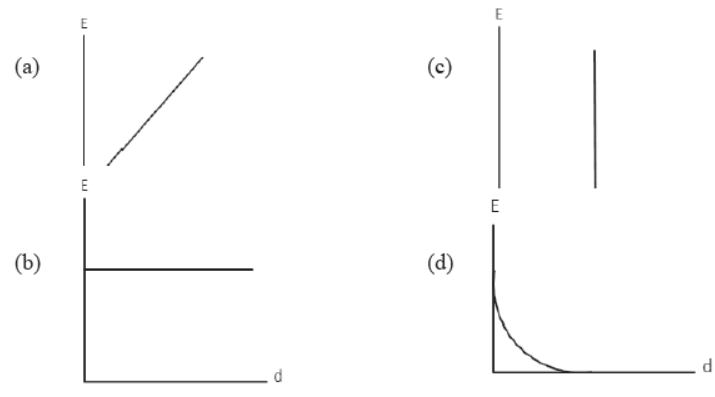Please refer to Electric Charges and Fields Class 12 Physics Important Questions with solutions provided below. These questions and answers have been provided for Class 12 Physics based on the latest syllabus and examination guidelines issued by CBSE, NCERT, and KVS. Students should learn these problem solutions as it will help them to gain more marks in examinations. We have provided Important Questions for Class 12 Physics for all chapters in your book. These Board exam questions have been designed by expert teachers of Standard 12.
Class 12 Physics Important Questions Electric Charges and Fields
Case Based Questions :
Quantization of Electric Charge Smallest charge that can exist in nature is the charge of an electron. During friction it is only the transfer of electrons which makes the body charged. Hence net charge on any body is an integral multiple of charge of an electron. If N is the number of electrons transferred from one body to another during charging, then the charge acquired by the body is given by Q = Ne where e is the charge on an electron. (e = 1.6 × 10-19C) and N can never be a fractional number. Hence no object can have a charge represented by 1.5e, 3e/5, e/4 etc.
but Quantization of charges is not applicable for macroscopic charges.
However, recently it has been discovered that elementary particles such as protons and neutrons are composed of elemental units called QUARKS.
Question. If charge on a body is 1 nC then how many electrons are lost/gained by the body?
(a) 6.25 × 1027
(b) 6.25 × 1028
(c) 6.25 × 109
(d) 1.6 × 1019
Answer
C
Question. If a body loses 109 electrons every second, then how much time is required by the body to get a total charge of 1.6 pC?mC
(a) 1 s
(b) 106 s
(c) 107 s
(d) 105 s
Answer
C
Question. Which of the following properties is not satisfied by an electric charge?
(a) Total charge conservation
(b) Two types of charges
(c) Quantization of charges
(d) Charge having directional property
Answer
D
Question. Which of the following charges is possible?
(a) 5.8 × 10-18 C
(b) 3.2 × 10-18 C
(c) 4.5 × 10-19 C
(d) 8.6 × 10-19 C
Answer
B
A Thin Plane Sheet of Charge
A thin plane sheet having charge on its surface is a source of electric field. If the surface charge density of the sheet is uniform, then the electric field produced by the sheet is found to be directly proportional to the surface charge density. At the same time, it is observed that for an infinite plane sheet , the electric field is independent of the distance from the sheet. The nature of charge distribution on the sheet decides the direction of the electric field. If the charge density of the sheet is greater than zero, then the electric field is directed perpendicular to the sheet in outwards direction. If the surface charge density of the sheet is negative, then the electric field is directed towards the sheet.
Question. The SI unit of surface charge density is
(a) N/Cm
(b) C/m3
(c) Cm2
(d) C/m2
Answer
D
Question. Two identical infinite plane sheets having uniform surface charge density +σ and -σ are held parallel to each other. Electric field between the sheets is
(a) zero
(b) σ/εo
(c) 2 σ/εo
(d) σ/2εo
Answer
B
Question. A thin infinite plane sheet having charge Q distributed uniformly over its surface is kept in free space. Two identical point charges are kept at a distance of 4cm and 10 cm respectively from the sheet. The ratio of force experienced by the point charges is
(a) 5 : 2
(b) 25 : 4
(c) 1 : 1
(d) 2 : 5
Answer
C
Question. The figure that correctly represents the variation of electric field due to an infinite plane sheet of charge with distance from the sheet is

Answer
B



